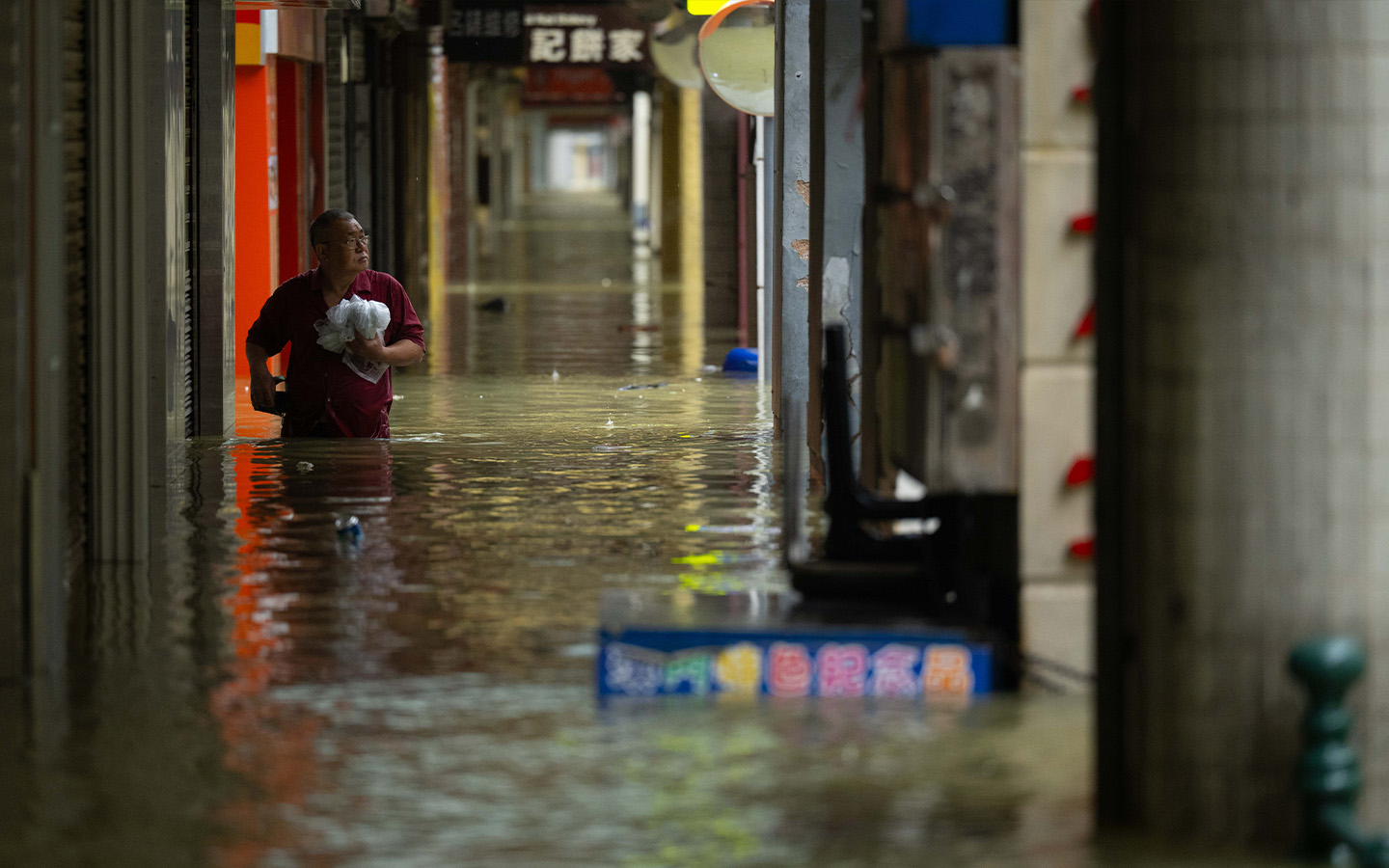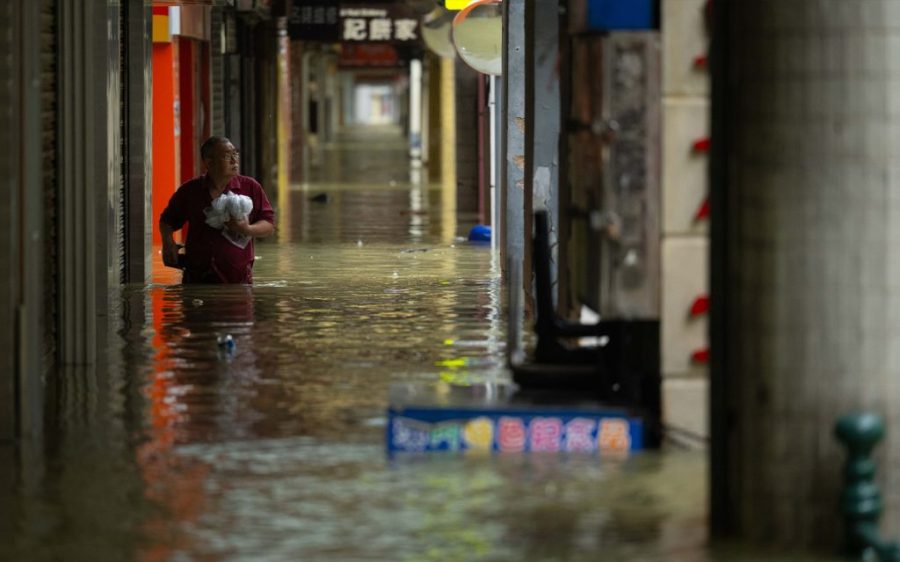All typhoon signals have been lowered as Ragasa – now weakened into a tropical storm – continues to head further from Macao. At 6 am, the storm was estimated to be 460 kilometres west of Macao, near the Leizhou Peninsula and the city of Zhanjiang in the southwestern part of Guangdong.
The Meteorological and Geophysical Bureau has issued a strong monsoon signal, however, and warns that strong winds with gusts are affecting Macao’s bridges. Drivers should be extra cautious when using them, while motorcyclists should use the motorcycle lanes on the Sai Van Bridge and Macau Bridge.
Ragasa’s outer circulation is also having lingering impacts on the territory. Under its influence, the local weather today will be mostly cloudy, with thunderstorms and showers, which will be heavy at first.
[See more: As it happened: Super Typhoon Ragasa batters Macao]
At its closest to Macao – overnight Tuesday and during most of Wednesday – Ragasa caused widespread flooding in Macao’s low-lying areas. The city’s iconic thoroughfare – the Avenida de Almeida Ribeiro, colloquially known as San Ma Lo – was inundated. Many residents of flood-prone areas were evacuated but some needed rescue with rafts and jet skis.
Power was cut to 16,000 households for several hours at the height of the flooding and more than 700 people sought refuge in government shelters. More than 200 flights were cancelled. There were eight injuries reported.
Ragasa, which achieved a maximum wind speed of 265 km/h, has been described as the strongest storm on Earth so far this year. Local researchers say that in the coming years Macao can expect more frequent instances of severe weather, and storms of greater ferocity, as a result of climate change.






